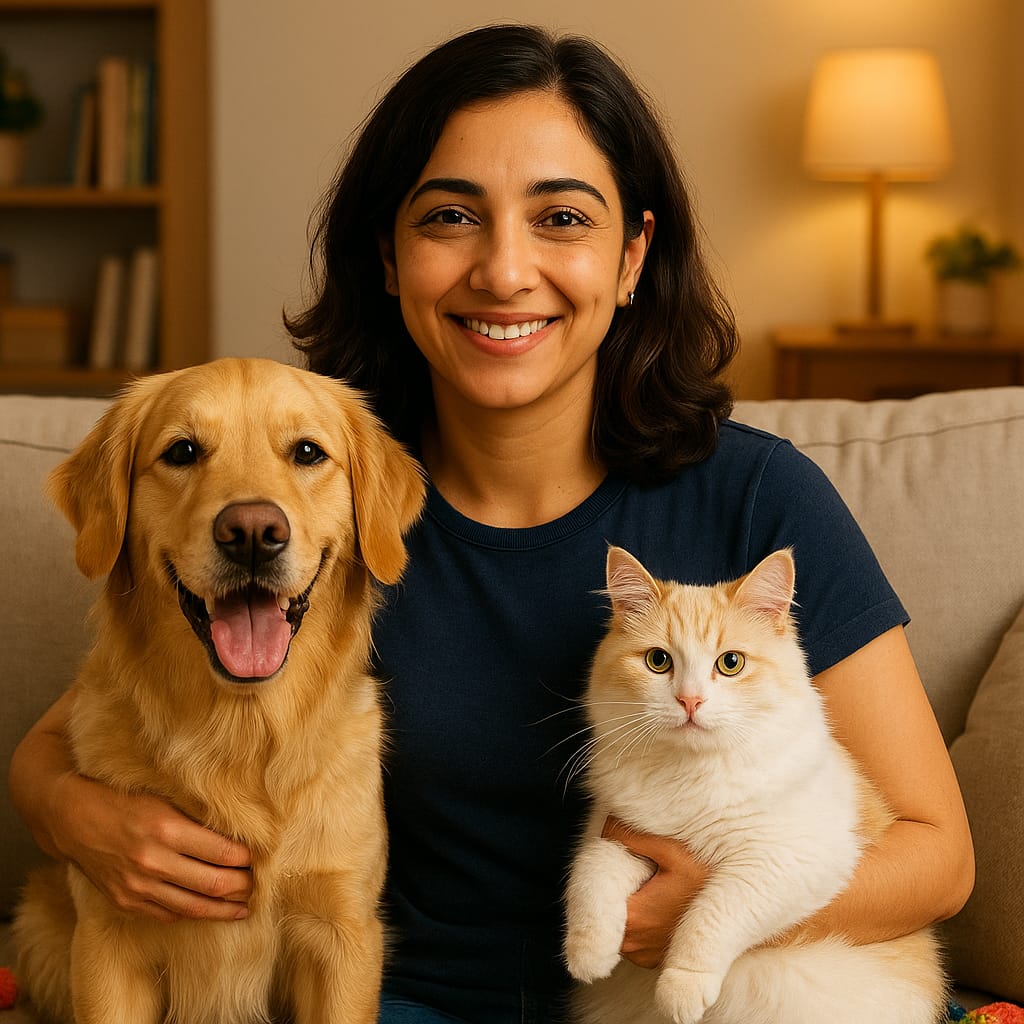There’s something undeniably enchanting about fluffy dog breeds. From their cloud-like appearance to their warm, cuddly embrace, these canine companions bring boundless joy and comfort to millions of households worldwide.
Whether you’re drawn to a tiny Pomeranian or a majestic Great Pyrenees, fluffy dogs come in all shapes, sizes, and temperaments—each with its own unique charm and care requirements.
In this comprehensive guide, we’ll explore everything you need to know about fluffy dog breeds: their characteristics, the most popular breeds across different size categories, grooming essentials, health considerations, and practical tips for maintaining those magnificent coats.
By the end of this article, you’ll have a thorough understanding of what it takes to care for these adorable furballs and which fluffy breed might be the perfect match for your lifestyle.
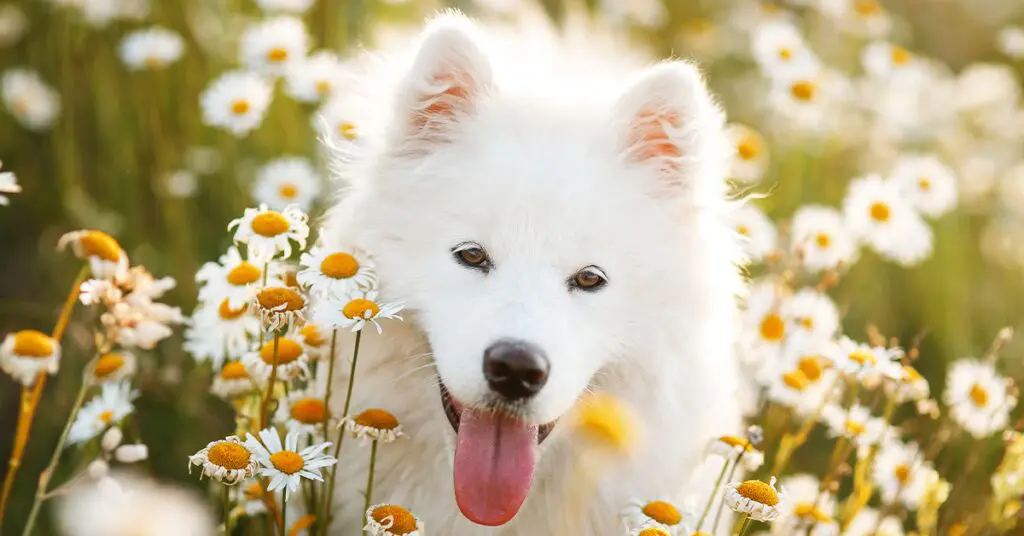
What Makes a Dog Breed “Fluffy”?
Before diving into specific breeds, it’s important to understand what makes a dog “fluffy” in the first place. The fluffiness of a dog is primarily determined by the structure and volume of its coat, which can vary significantly across breeds.
The Science Behind the Fluff
Fluffy dogs typically have one of two coat types:
-
Double Coats: These consist of a soft, dense undercoat (providing insulation) and a longer, coarser outer coat (providing protection). Double-coated breeds like Samoyeds, Huskies, and Chow Chows appear especially fluffy because their undercoat is thick and plush.
-
Long Single Coats: Some breeds like the Maltese and Havanese have long, silky coats without the dense undercoat. While still fluffy in appearance, their fur has a different texture and maintenance requirements.
The fluffiness of a dog’s coat is determined by genetics, specifically genes that control hair length, texture, and growth patterns. Many fluffy breeds were originally developed in colder climates, where their thick coats provided essential protection against harsh weather conditions.
Check out our Homemade Frozen Dog Treats Recipes Vet Approved & Easy to Make for tasty and healthy snacks your dog will love.
Small Fluffy Dog Breeds
Small fluffy dogs offer the perfect combination of adorable appearance and manageable size. These pocket-sized furballs are ideal for apartment living and make wonderful companion animals.
Bichon Frise
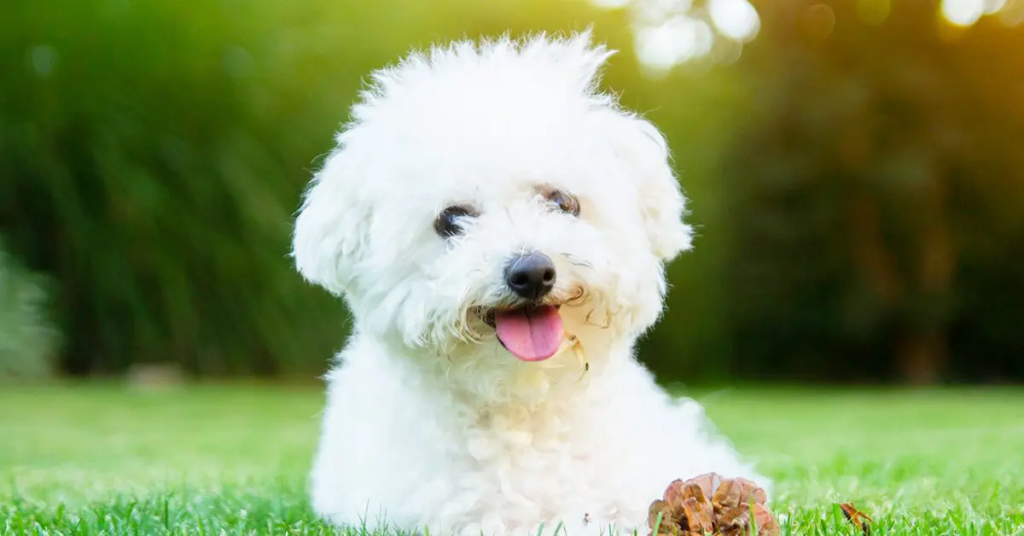
The Bichon Frise is a cheerful, powder-puff of a dog with a playful personality. Their hypoallergenic coat consists of soft, curly white hair that gives them their signature fluffy appearance.
Characteristics:
- Weight: 12-18 pounds
- Height: 9.5-11.5 inches
- Lifespan: 14-15 years
- Temperament: Playful, affectionate, gentle, and good with children
Grooming Needs: High maintenance. Requires brushing 2-3 times weekly and professional grooming every 4-6 weeks to maintain their fluffy appearance.
Pomeranian

The Pomeranian is a tiny ball of fluff with a big personality. These spirited little dogs come in various colors, including orange, cream, black, and parti-color.
Characteristics:
- Weight: 3-7 pounds
- Height: 6-7 inches
- Lifespan: 12-16 years
- Temperament: Lively, bold, intelligent, and sometimes stubborn
Grooming Needs: Moderate to high. Their double coat requires brushing several times weekly, with more frequent grooming during seasonal shedding periods.
Maltese
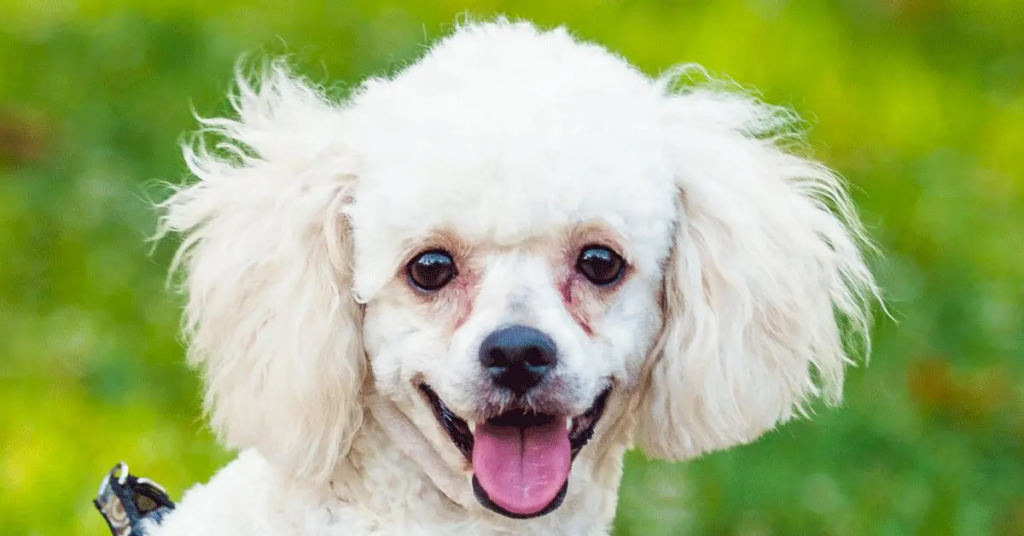
With their silky white coat and elegant appearance, Maltese dogs have been beloved companions for thousands of years. Their floor-length fur makes them a striking sight.
Characteristics:
- Weight: Under 7 pounds
- Height: 8-10 inches
- Lifespan: 12-15 years
- Temperament: Gentle, playful, responsive to training
Grooming Needs: High maintenance. Daily brushing is necessary to prevent mats and tangles. Many owners opt for the “puppy cut” to simplify maintenance.
Shih Tzu
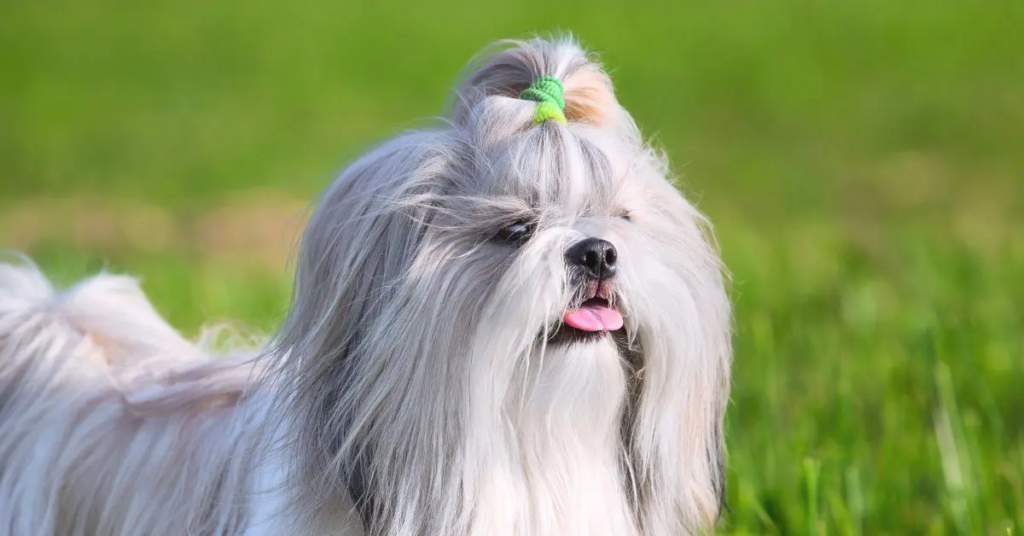
Shih Tzus are known as “lion dogs” in their native China. Their long, flowing double coat comes in a variety of colors and patterns.
Characteristics:
- Weight: 9-16 pounds
- Height: 9-10.5 inches
- Lifespan: 10-18 years
- Temperament: Affectionate, outgoing, friendly, and trusting
Grooming Needs: Very high maintenance. Daily brushing and regular professional grooming are necessary. Many owners choose to keep their Shih Tzu’s coat in a shorter “puppy cut” for easier maintenance.
Havanese
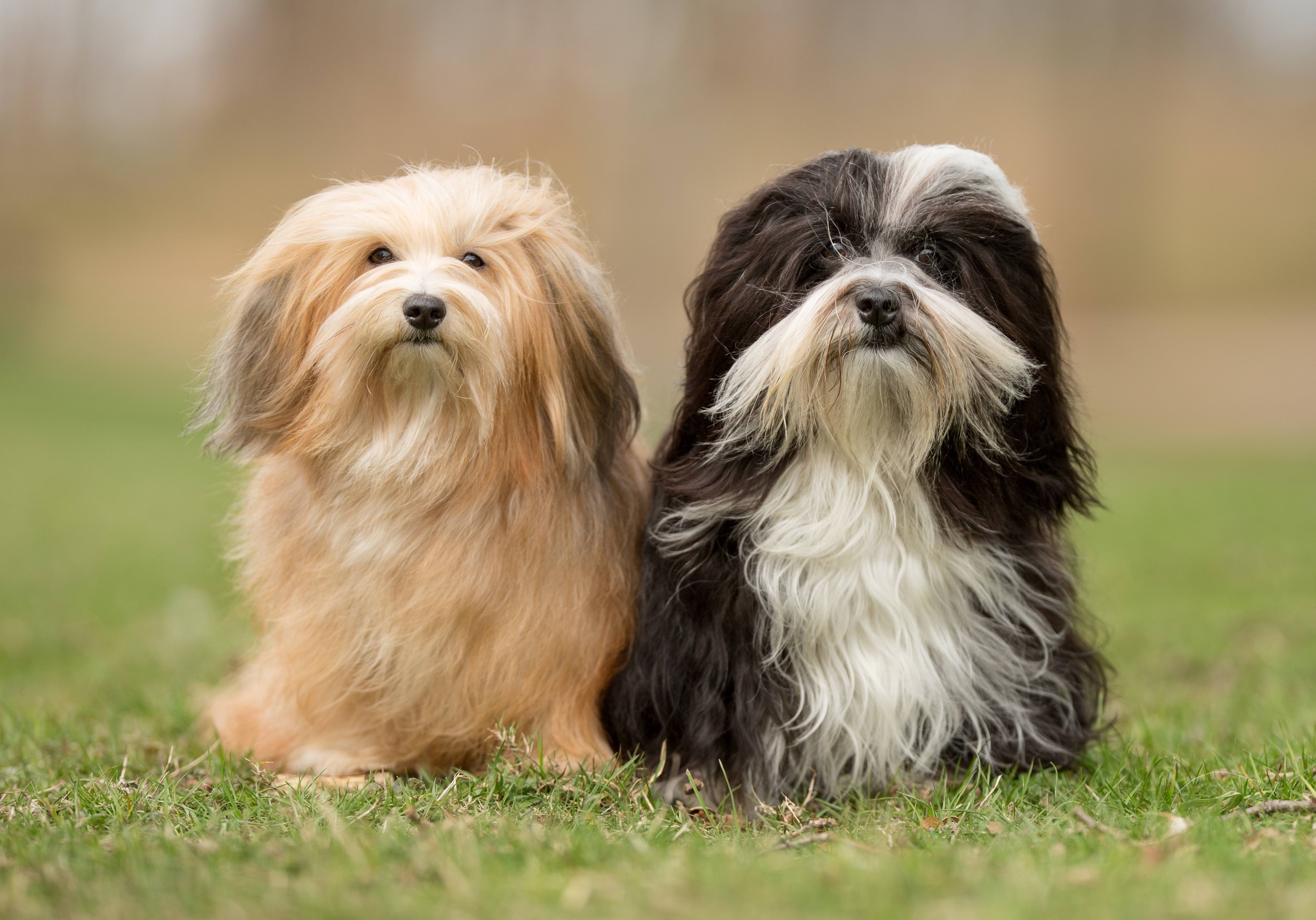
The only dog breed native to Cuba, the Havanese is a charming companion with a silky, wavy coat that can be left long or trimmed into a more manageable style.
Characteristics:
- Weight: 7-13 pounds
- Height: 8.5-11.5 inches
- Lifespan: 14-16 years
- Temperament: Intelligent, social, adaptable, and good with families
Grooming Needs: Moderate to high. Their non-shedding coat requires brushing several times a week and occasional professional grooming.
If you want to protect your pet’s food from ants, read How to Keep Ants Out of Pet Food Naturally and Easily for natural and simple solutions.
Medium Fluffy Dog Breeds
Medium-sized fluffy dogs strike the perfect balance between the portability of smaller breeds and the sturdy presence of larger ones. These versatile companions are suitable for various living situations and family arrangements.
Shetland Sheepdog
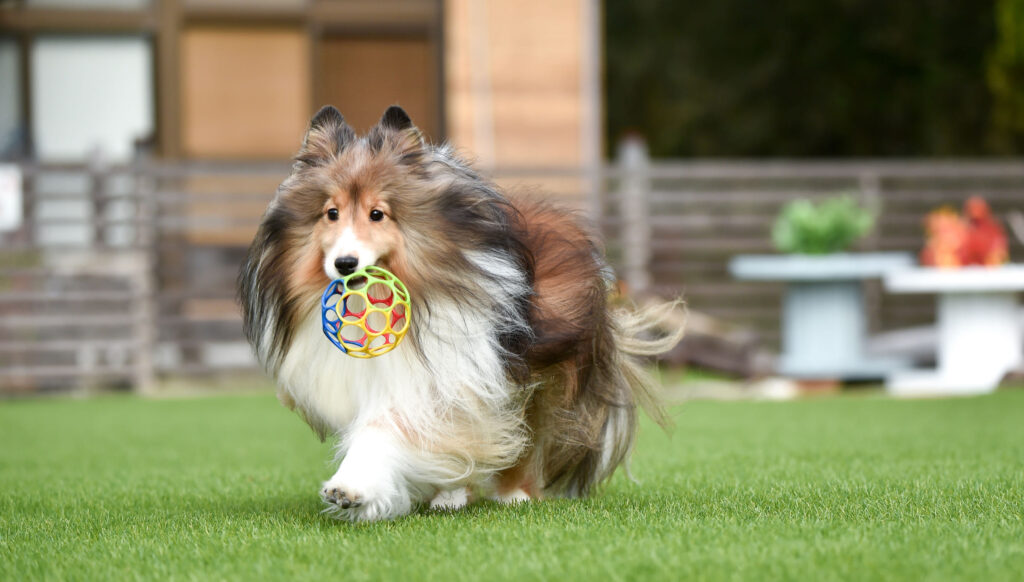
Often called “Shelties,” these dogs resemble miniature Collies with their luxurious double coat and intelligent expression. They excel in obedience and agility competitions.
Characteristics:
- Weight: 15-25 pounds
- Height: 13-16 inches
- Lifespan: 12-14 years
- Temperament: Intelligent, energetic, loyal, and sometimes reserved with strangers
Grooming Needs: High maintenance. Their abundant coat requires brushing several times a week, with more frequent attention during shedding seasons.
American Eskimo Dog
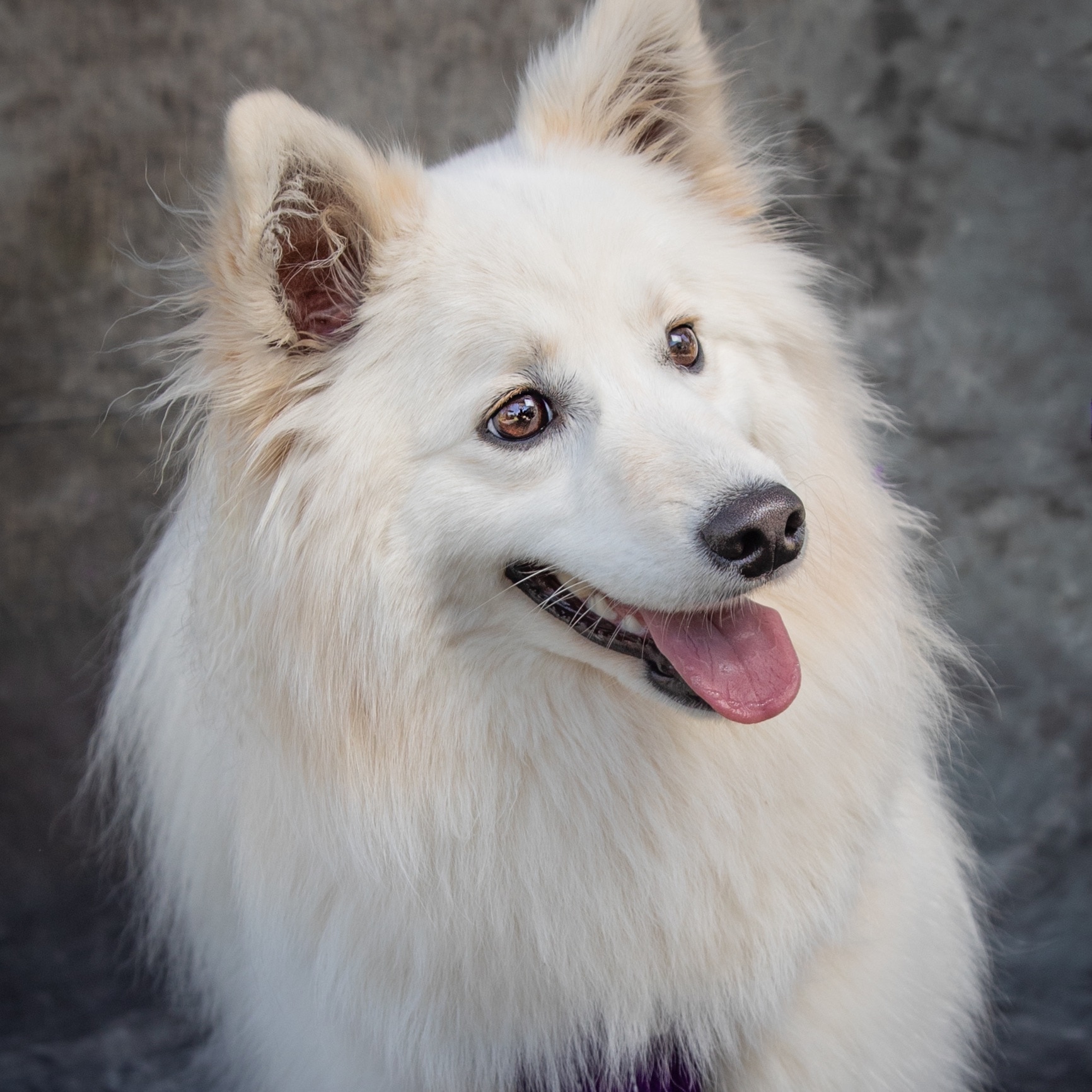
Despite their name, American Eskimo Dogs originated in Germany. These striking white dogs come in toy, miniature, and standard sizes.
Characteristics:
- Weight: 10-35 pounds (depending on size variety)
- Height: 9-19 inches
- Lifespan: 13-15 years
- Temperament: Alert, friendly, intelligent, and good with children
Grooming Needs: Moderate to high. Their dense white coat requires brushing at least twice weekly to manage shedding and prevent matting.
Cocker Spaniel

Cocker Spaniels have a luxurious, silky coat with feathering on their ears, chest, abdomen, and legs. These gentle dogs make wonderful family pets.
Characteristics:
- Weight: 20-30 pounds
- Height: 13.5-15.5 inches
- Lifespan: 10-14 years
- Temperament: Gentle, smart, happy, and often good with children
Grooming Needs: High maintenance. Their silky coat requires brushing every few days and professional grooming every 4-6 weeks to prevent matting, especially around the ears.
Keeshond

The Keeshond (pronounced “KAYZ-hawnd”) is a medium-sized spitz breed with a thick, plush double coat and distinctive “spectacles” markings around their eyes.
Characteristics:
- Weight: 35-45 pounds
- Height: 17-18 inches
- Lifespan: 12-15 years
- Temperament: Friendly, outgoing, alert, and intelligent
Grooming Needs: Moderate to high. Their dense double coat requires brushing 2-3 times weekly, with more frequent grooming during seasonal shedding.
If you’ve ever wondered why does my dog follow me everywhere?, understanding your canine shadow can help you strengthen your bond and meet your furry friend’s needs better.
Large Fluffy Dog Breeds
Large fluffy dogs are truly magnificent creatures that combine imposing size with soft, cuddly coats. These gentle giants often have calm temperaments that belie their impressive stature.
Samoyed

Often called “smiling Sammies” due to their perpetually upturned mouth corners, Samoyeds are striking white dogs originally bred for pulling sleds in Siberia.
Characteristics:
- Weight: 35-65 pounds
- Height: 19-24 inches
- Lifespan: 12-14 years
- Temperament: Friendly, gentle, adaptable, and good with families
Grooming Needs: High maintenance. Their dense white coat requires brushing several times a week, with more frequent grooming during the heavy seasonal shedding periods.
Bernese Mountain Dog
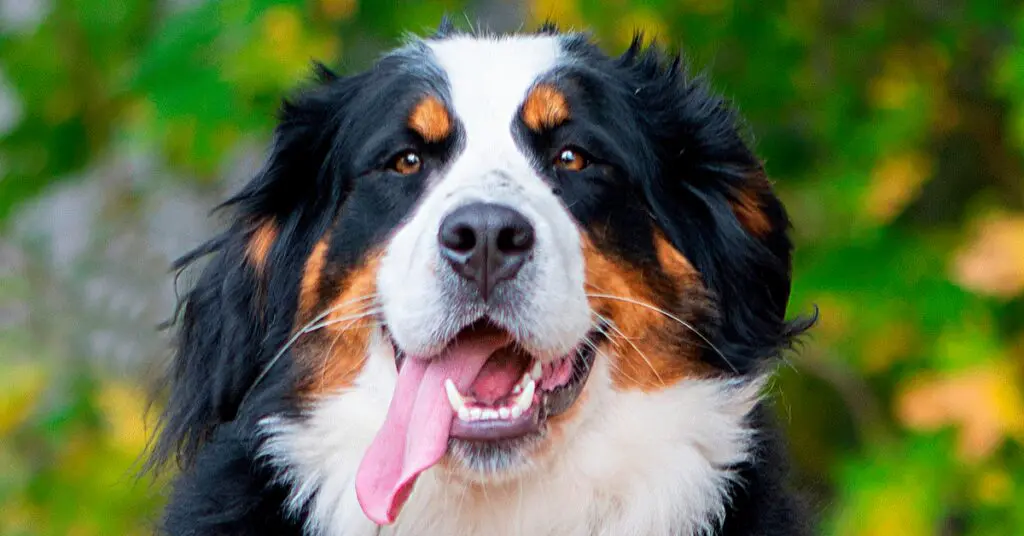
The Bernese Mountain Dog is a large, good-natured working breed with a striking tri-colored coat. These gentle giants are known for their calm demeanor and loyalty.
Characteristics:
- Weight: 70-115 pounds
- Height: 23-27.5 inches
- Lifespan: 7-10 years
- Temperament: Good-natured, calm, strong, and family-oriented
Grooming Needs: Moderate to high. Their thick double coat requires brushing several times a week to prevent matting and manage shedding.
Chow Chow

With their lion-like mane and distinctive blue-black tongue, Chow Chows are one of the most recognizable fluffy breeds. These ancient Chinese dogs are known for their dignified demeanor.
Characteristics:
- Weight: 45-70 pounds
- Height: 17-20 inches
- Lifespan: 8-12 years
- Temperament: Dignified, aloof, independent, and loyal to family
Grooming Needs: High maintenance. Their thick double coat requires regular brushing to prevent matting and manage seasonal shedding. Particular attention must be paid to the dense ruff around their neck.
Great Pyrenees
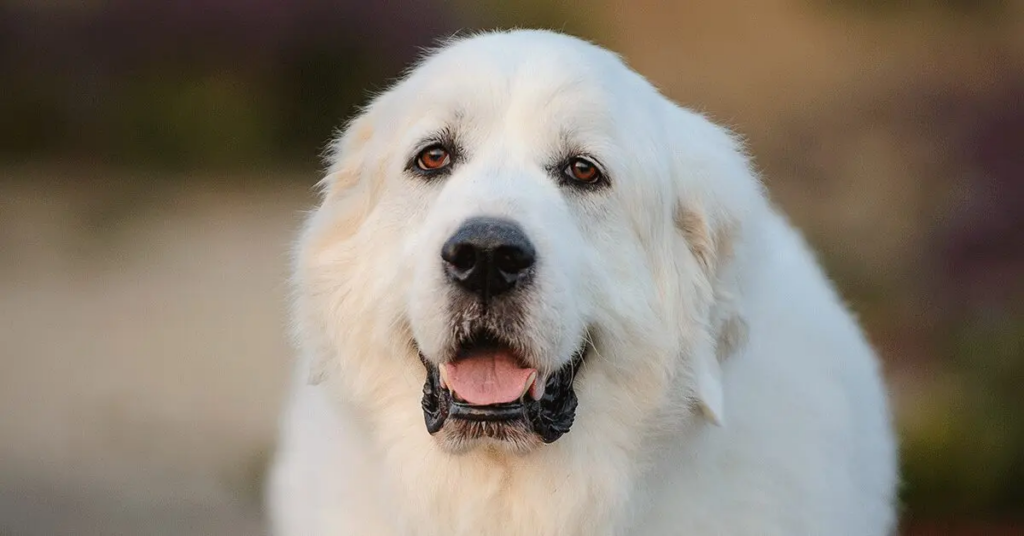
Originally bred to guard livestock in the Pyrenees Mountains between France and Spain, the Great Pyrenees is a majestic white dog with a thick, weather-resistant coat.
Characteristics:
- Weight: 85-100+ pounds
- Height: 25-32 inches
- Lifespan: 10-12 years
- Temperament: Calm, patient, gentle with family, and protective
Grooming Needs: Moderate to high. Despite their abundant coat, Great Pyrenees require less intensive grooming than some other fluffy breeds. Weekly brushing is usually sufficient, with more attention needed during seasonal shedding periods.
Old English Sheepdog
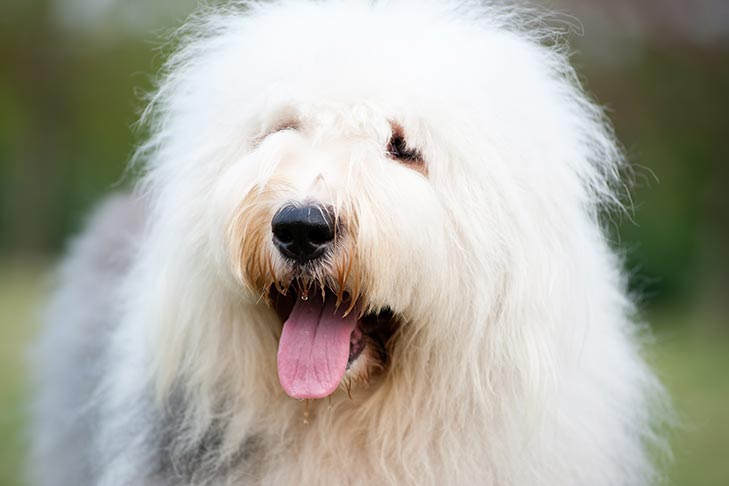
With their shaggy, gray and white coat covering their eyes, Old English Sheepdogs have an unmistakable appearance that has made them icons in popular culture.
Characteristics:
- Weight: 60-100 pounds
- Height: 21-22 inches (at shoulder)
- Lifespan: 10-12 years
- Temperament: Adaptable, intelligent, gentle, and good with children
Grooming Needs: Very high maintenance. Their profuse double coat requires several hours of brushing each week to prevent matting. Many owners opt for regular professional grooming or shorter cuts to simplify maintenance. For more detailed information about each breed, visit the American Kennel Club’s dog breeds page.
Grooming Essentials for Fluffy Dogs
The stunning appearance of fluffy dog breeds comes with significant grooming responsibilities. Proper maintenance not only keeps your dog looking beautiful but also prevents health issues related to matted fur and skin problems.
Essential Grooming Tools
For effective fluffy dog maintenance, you’ll need:
- Slicker Brush: Essential for removing loose fur and preventing mats in long or dense coats.
- Undercoat Rake: Particularly important for double-coated breeds during shedding seasons.
- Steel Comb: For detangling and finishing after brushing.
- Detangling Spray: Helps work through stubborn knots without causing discomfort.
- Quality Shampoo and Conditioner: Designed specifically for dogs with long or thick coats.
- High-Velocity Dryer: While optional for home use, this tool dramatically speeds up drying time after baths.
Establishing a Grooming Routine
Consistency is key when grooming fluffy dogs. Establish a regular routine that includes:
Daily Maintenance
- Quick brush-through to prevent tangles
- Check for debris or foreign objects caught in the coat
- Wipe face and eye area as needed
Weekly Deep Grooming
- Thorough brushing session to remove loose fur
- Check ears, eyes, and paws
- Trim around sanitary areas as needed
Monthly Care
- Full bath with appropriate dog shampoo
- Complete coat blowout or thorough drying
- Nail trimming and paw pad maintenance
Seasonal Considerations
- More frequent brushing during shedding seasons (typically spring and fall for double-coated breeds)
- Lighter grooming in summer months for some breeds
- Protection from ice and snow buildup in winter
Professional vs. Home Grooming
While many aspects of grooming can be handled at home, most fluffy dog owners benefit from establishing a relationship with a professional groomer. Consider:
- Professional Grooming: Schedule appointments every 4-8 weeks for breeds requiring haircuts or extensive coat maintenance.
- Home Maintenance: Handle regular brushing and basic care at home between professional appointments.
- Grooming Training: Ask your groomer to demonstrate proper techniques you can apply at home.
If you want to keep your furry friend happy and healthy, don’t forget to check out our guide on How to Improve Dog Gut Health Naturally Home Remedies for simple tips you can try at home.
Health Considerations for Fluffy Dog Breeds
Fluffy dogs have specific health considerations related to their magnificent coats and breed characteristics. Understanding these challenges helps you provide the best care.
Common Coat-Related Issues
-
Matting: When fur becomes tangled and compacted against the skin, it can cause pain, skin irritation, and even restrict movement. Regular brushing is essential to prevent this serious issue.
-
Skin Infections: The dense coats of fluffy dogs can trap moisture and bacteria against the skin, potentially leading to hot spots or bacterial infections. Regular checking of the skin beneath the coat is important.
-
Parasites: Fleas, ticks, and other parasites can hide in thick fur. Regular preventative treatments and thorough checking during grooming sessions are necessary.
-
Overheating: Many fluffy breeds, especially those with double coats, can be prone to overheating in warm weather. Always provide shade, fresh water, and avoid exercise during the hottest parts of the day.
Breed-Specific Health Concerns
Beyond coat-related issues, many fluffy breeds have genetic predispositions to certain health conditions:
-
Brachycephalic Issues: Flat-faced fluffy breeds like Shih Tzus and Pekingese may experience breathing difficulties and heat intolerance.
-
Hip Dysplasia: Large fluffy breeds like Bernese Mountain Dogs and Newfoundlands have increased risk of this skeletal condition.
-
Eye Problems: Breeds with hair that falls over their eyes (like Old English Sheepdogs) can develop eye irritations if the fur isn’t properly maintained.
-
Heart Conditions: Some breeds like the Cavalier King Charles Spaniel are prone to mitral valve disease.
Preventative Care Tips
To maintain optimal health for your fluffy companion:
-
Regular Veterinary Check-ups: Schedule bi-annual wellness exams to catch potential issues early.
-
Appropriate Diet: Feed high-quality nutrition that supports coat health and meets the specific caloric needs of your breed.
-
Weight Management: Excess weight puts additional strain on joints and can exacerbate breathing issues in some fluffy breeds.
-
Exercise Adaptation: Tailor exercise to your breed’s needs and limitations, especially during extreme temperatures.
-
Dental Care: Establish a regular dental hygiene routine to prevent periodontal disease.
If your puppy is struggling with excitement urination, check out our helpful guide How to Stop Puppy Excited Pee Quickly: Proven Tips to End Excitement Urination to learn easy and effective ways to manage it.
Living With Fluffy Dogs: Practical Considerations
Before bringing a fluffy dog into your home, consider these practical aspects of daily life with a cloud-like companion.
Home Maintenance Challenges
Living with fluffy dogs means accepting certain realities:
-
Fur Management: Invest in quality vacuum cleaners designed for pet hair. Consider keeping lint rollers in multiple rooms and your car.
-
Furniture Protection: Decide whether furniture will be off-limits or protected with washable covers.
-
Flooring Considerations: Hardwood and tile floors make hair cleanup easier than carpeting. Area rugs should be easily washable.
-
Air Quality: Consider air purifiers with HEPA filters to reduce airborne dander and fur.
Climate Adaptations
Different fluffy breeds have varying needs based on climate:
-
Cold Weather Breeds: Dogs like Samoyeds, Alaskan Malamutes, and Great Pyrenees thrive in cooler temperatures but require special attention in warmer climates.
-
Adaptable Breeds: Poodles, Bichon Frises, and many medium fluffy dogs can adjust well to various climates with proper care.
-
Warm Weather Considerations: All fluffy breeds need extra attention during hot weather, including indoor access during peak heat, cooling mats, and appropriate exercise timing.
Family Compatibility
Consider how a fluffy dog will integrate with your family:
-
Children: Many fluffy breeds like Newfoundlands, Collies, and Bichon Frises are excellent with children, while others may be more suited to homes with older children or adults.
-
Other Pets: Some fluffy breeds have strong prey drives or herding instincts that may affect compatibility with cats or smaller animals.
-
Allergies: While no dog is truly hypoallergenic, breeds like Poodles, Bichon Frises, and Maltese tend to produce fewer allergens.
-
Time Commitment: Honestly assess whether your family has the time required for the grooming and exercise needs of your chosen breed.
Selecting the Right Fluffy Dog Breed for Your Lifestyle
Finding the perfect fluffy companion involves matching your lifestyle, living situation, and preferences with the characteristics of different breeds.
Lifestyle Assessment Questions
Ask yourself these important questions:
-
Activity Level: How active are you? Do you enjoy daily walks, hiking, or would you prefer a more laid-back companion?
-
Living Space: Do you have a large yard, a small apartment, or something in between?
-
Time Availability: How much time can you realistically dedicate to grooming, exercise, and training?
-
Experience Level: Is this your first dog, or do you have experience with more demanding breeds?
-
Long-term Commitment: Are you prepared for a commitment of 10-15 years or potentially more?
Best Fluffy Dogs for Different Situations
Based on common lifestyle scenarios:
For Apartment Dwellers
- Shih Tzu
- Havanese
- Bichon Frise
- Maltese
- Toy or Miniature Poodle
These breeds adapt well to smaller spaces and typically have moderate exercise needs that can be met with daily walks and indoor play.
For Active Families
- Australian Shepherd
- Shetland Sheepdog
- Standard Poodle
- Samoyed
- Collie
These energetic breeds thrive with active families who enjoy outdoor activities and can provide substantial daily exercise.
For First-Time Dog Owners
- Bichon Frise
- Cavalier King Charles Spaniel
- Havanese
- Cocker Spaniel
- Keeshond
These breeds tend to be adaptable, trainable, and forgiving of novice mistakes while still requiring reasonable commitment to grooming.
For Families with Children
- Newfoundland
- Collie
- Bernese Mountain Dog
- Golden Retriever
- Old English Sheepdog
Known for their patience and gentle nature with children, these breeds make excellent family companions when properly trained and socialized.
For Experienced Dog Owners
- Tibetan Mastiff
- Chow Chow
- Alaskan Malamute
- Akita
- Old English Sheepdog
These breeds often have strong personalities, specific training needs, or particularly demanding grooming requirements that benefit from experienced handling.
Conclusion
Fluffy dog breeds offer unparalleled visual appeal and affectionate companionship, but they also come with specific care requirements and considerations. From the tiny Pomeranian to the massive Newfoundland, these dogs capture our hearts with their soft coats and distinctive personalities.
By understanding the grooming needs, health considerations, and lifestyle compatibility of different fluffy breeds, you can make an informed decision about which cloud-like companion might be the perfect addition to your family. Remember that regardless of which breed you choose, your fluffy friend will require consistent care, regular grooming, and lots of love to thrive.
Whether you’re drawn to a small, cuddly lap dog or an impressive, majestic giant, there’s a fluffy breed out there that’s just right for you—ready to fill your days with joy, your home with fur, and your heart with unconditional love.
FAQs
The Samoyed is often considered one of the fluffiest dog breeds, with its thick, cloud-like white double coat. Other contenders include the Chow Chow, Tibetan Mastiff, and Old English Sheepdog, each with their own distinctive type of fluffiness. What is the fluffiest dog breed in the world?
Are fluffy dogs hypoallergenic?
Not all fluffy dogs are hypoallergenic. In fact, many heavily shedding fluffy breeds like Samoyeds and Huskies produce significant allergens. However, some fluffy breeds like Poodles, Bichon Frises, and Maltese are considered more suitable for allergy sufferers as they shed less and produce fewer allergens.
How often should I groom my fluffy dog?
Grooming frequency depends on the specific breed and coat type. Most fluffy dogs require brushing at least 2-3 times per week, with double-coated breeds needing daily attention during shedding seasons. Professional grooming is typically recommended every 4-8 weeks depending on the breed and desired coat length.
Do fluffy dogs shed a lot?
Some fluffy dogs shed extensively (like Samoyeds, Great Pyrenees, and Collies), while others shed minimally (like Poodles, Bichon Frises, and Maltese). Double-coated breeds typically have seasonal “blowing coat” periods when shedding increases dramatically.
What are the best fluffy dog breeds for families with children?
New found lands, Collies, Bernese Mountain Dogs, Samoyeds, and well-bred Old English Sheepdogs are often excellent with children due to their patient, gentle temperaments. However, individual personality and proper socialization are always important factors regardless of breed.

